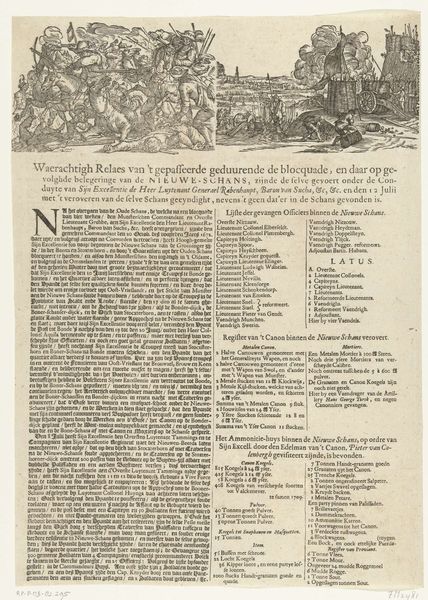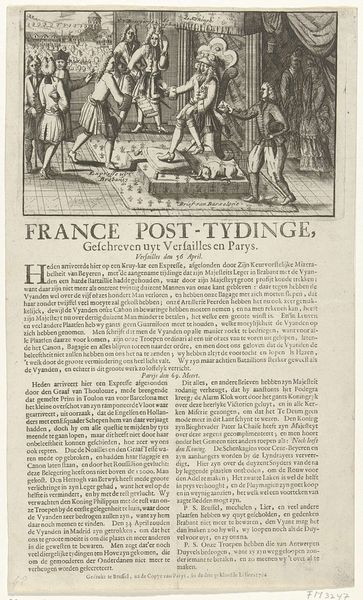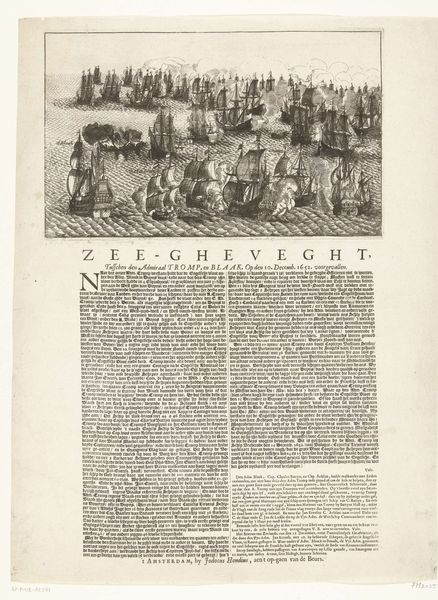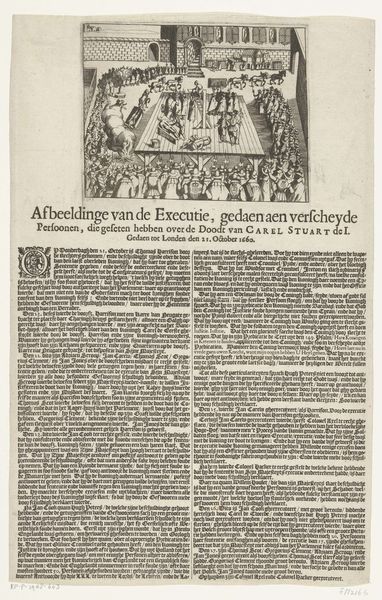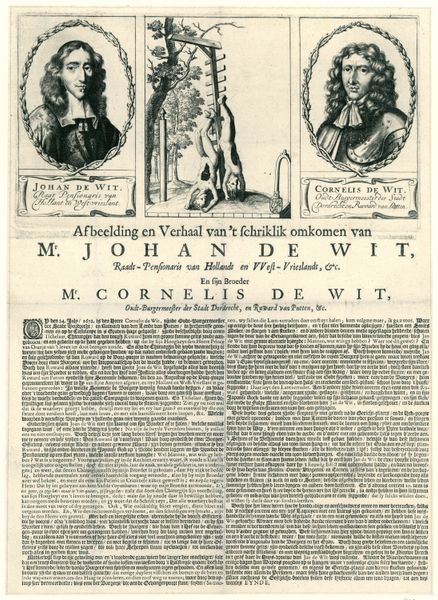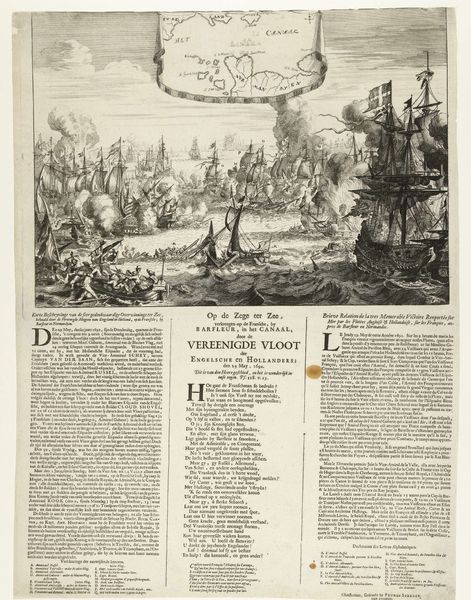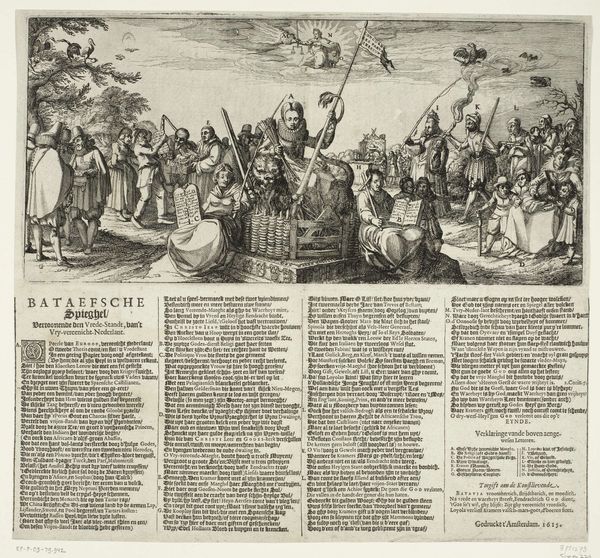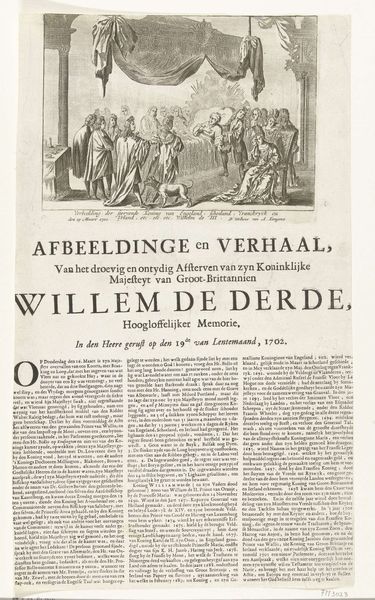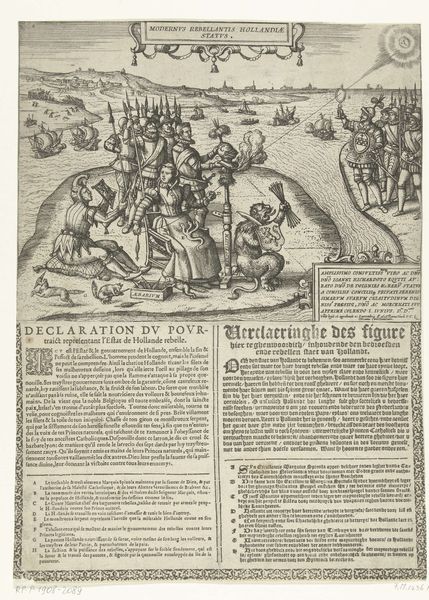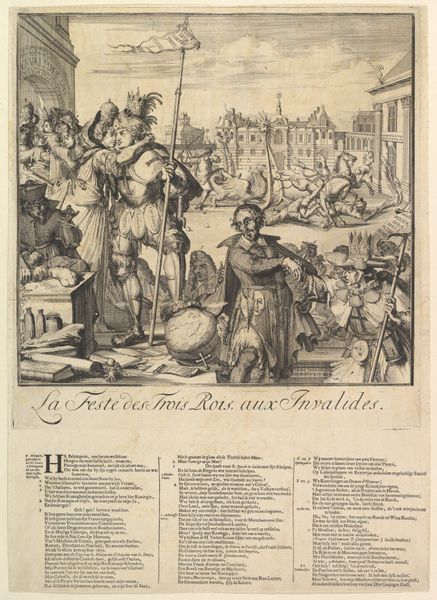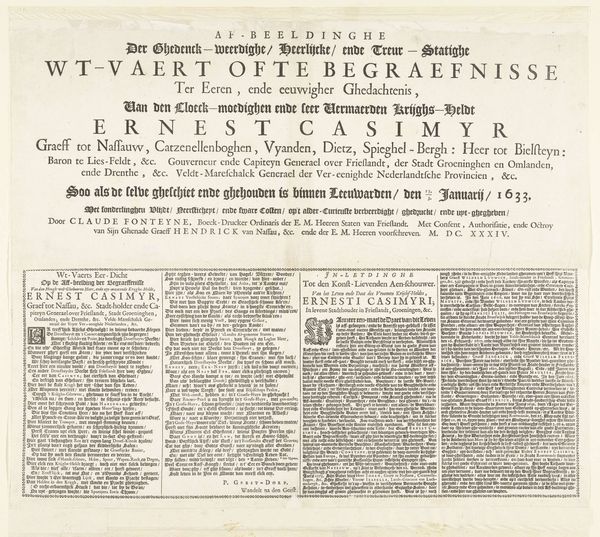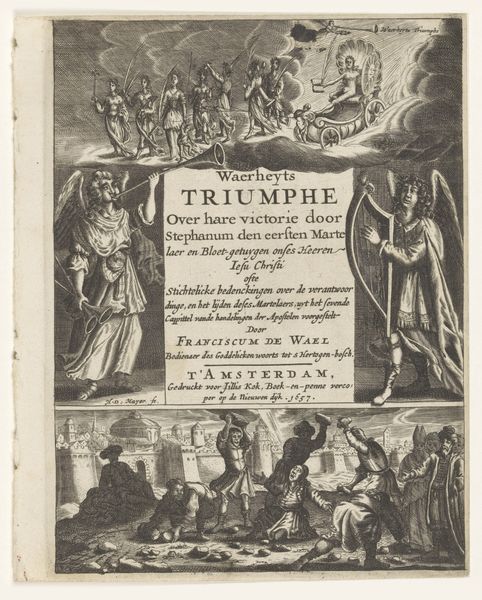
print, etching, engraving
#
narrative-art
#
baroque
#
dutch-golden-age
# print
#
etching
#
cityscape
#
history-painting
#
engraving
Dimensions: height 334 mm, width 264 mm
Copyright: Rijks Museum: Open Domain
This print, made in Amsterdam by Jan Jacobsz in 1673, depicts the naval battle of Schooneveld. The process of etching would have involved coating a metal plate with wax, then using a sharp tool to scratch an image into the wax, exposing the metal. The plate would then be submerged in acid, which would bite into the exposed metal, creating the lines of the image. Consider how the material qualities of the metal plate influence the final image. The precision of the etched lines allows for a high level of detail, particularly in the rendering of the ships and the turbulent waves. The black ink, when pressed onto paper, creates a stark contrast, emphasizing the drama of the battle. Prints like this were a form of mass media, allowing news and propaganda to circulate widely. The labor involved – from the craftsman etching the plate to the printer producing numerous copies – reflects the growing commercialization of art and information in the Dutch Golden Age. These materials, processes, and its wider context contribute to the meaning of the artwork.
Comments
No comments
Be the first to comment and join the conversation on the ultimate creative platform.

